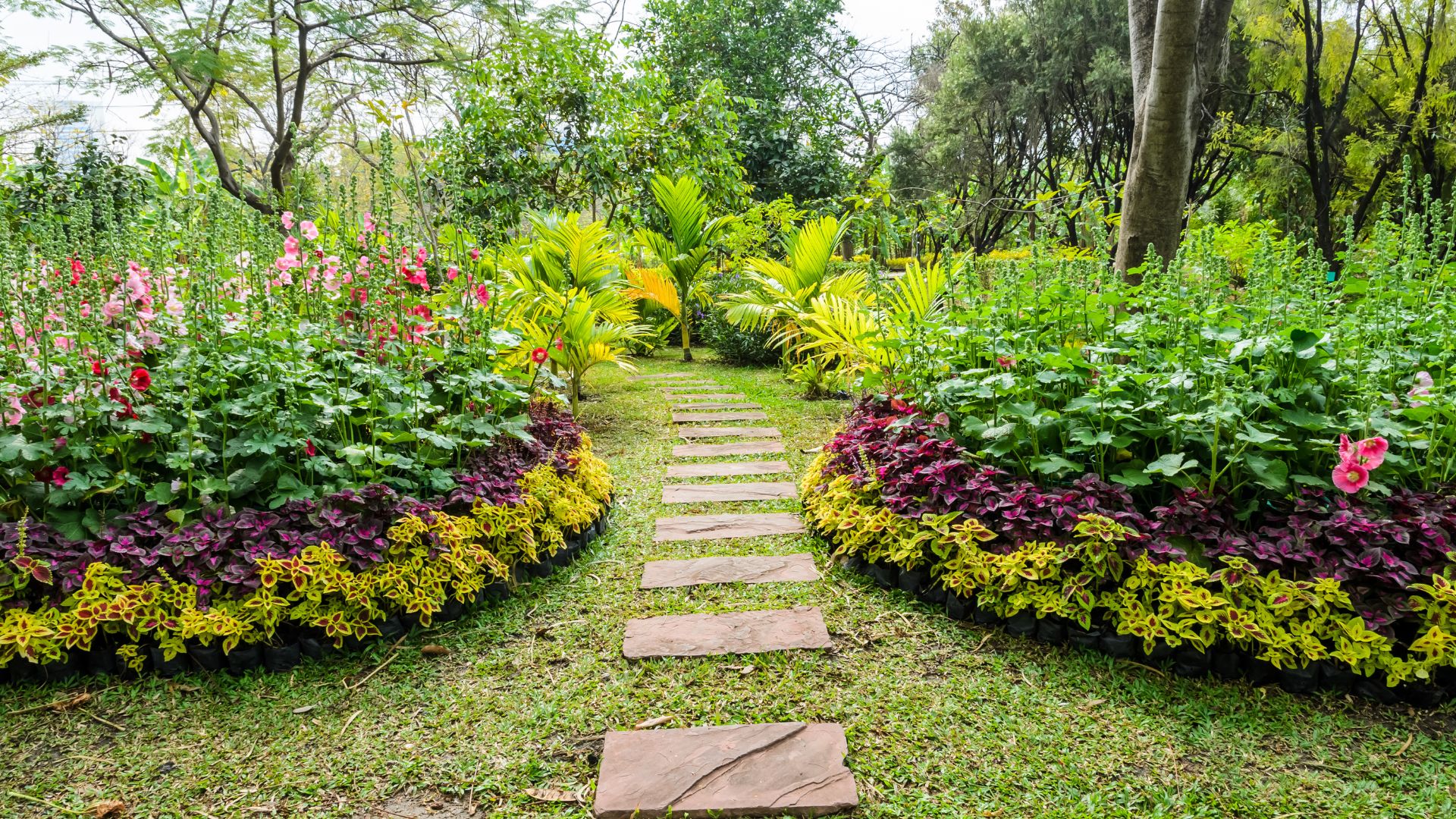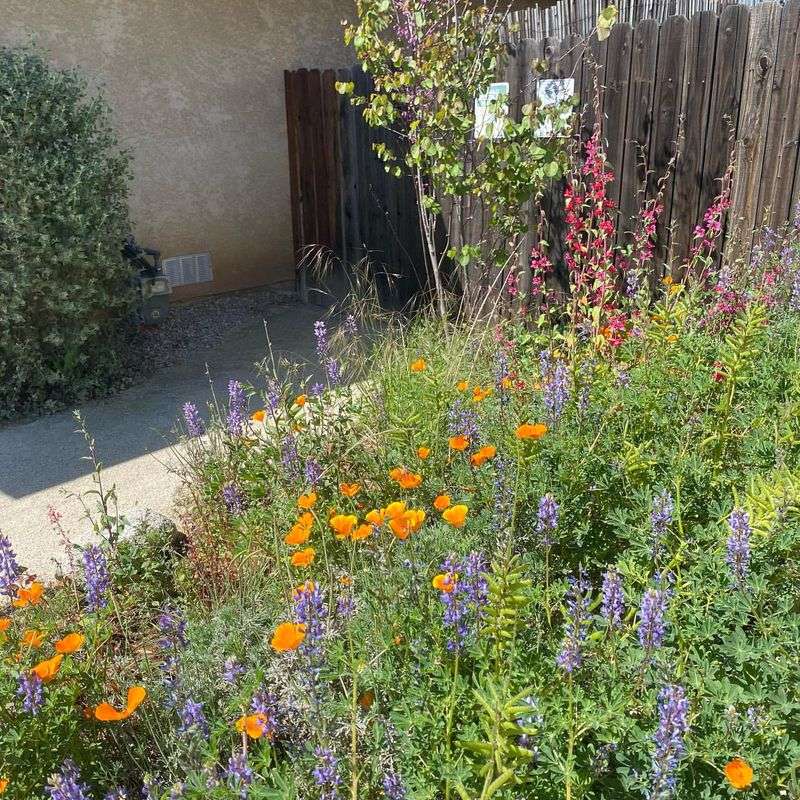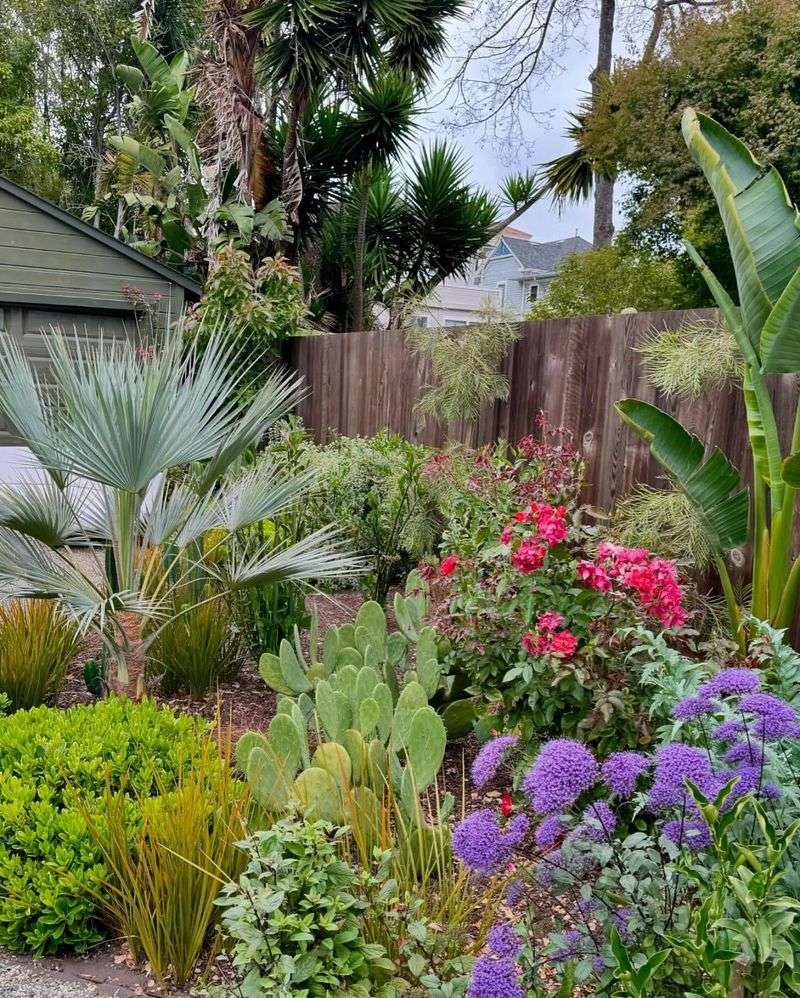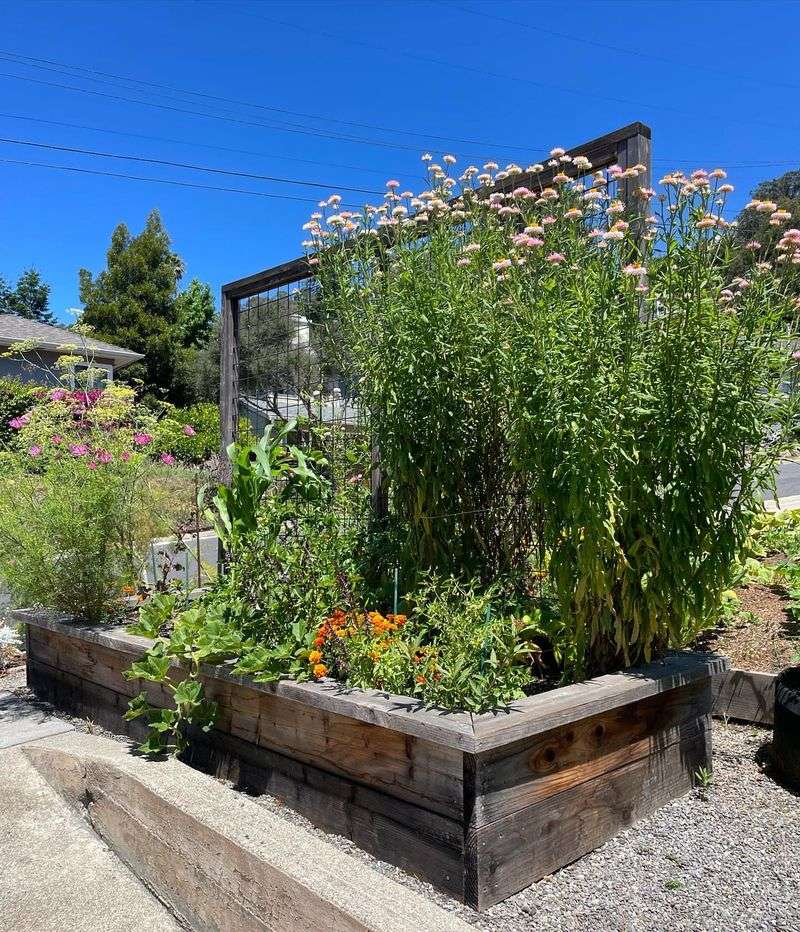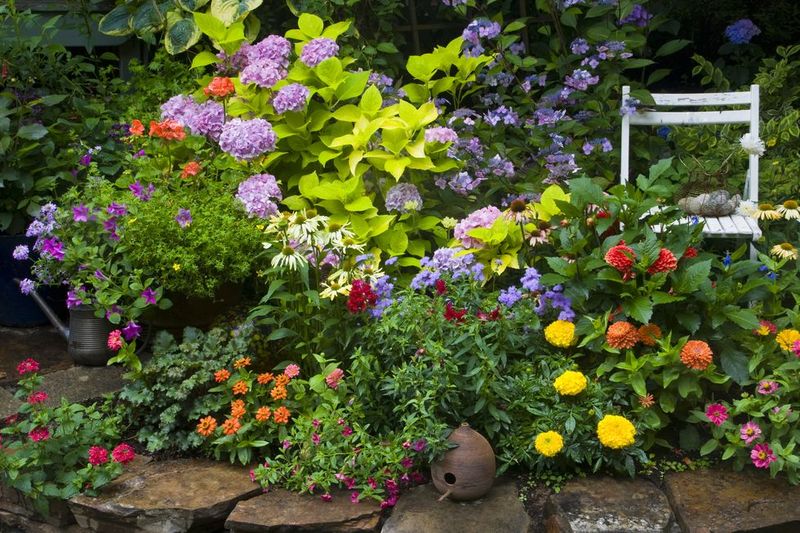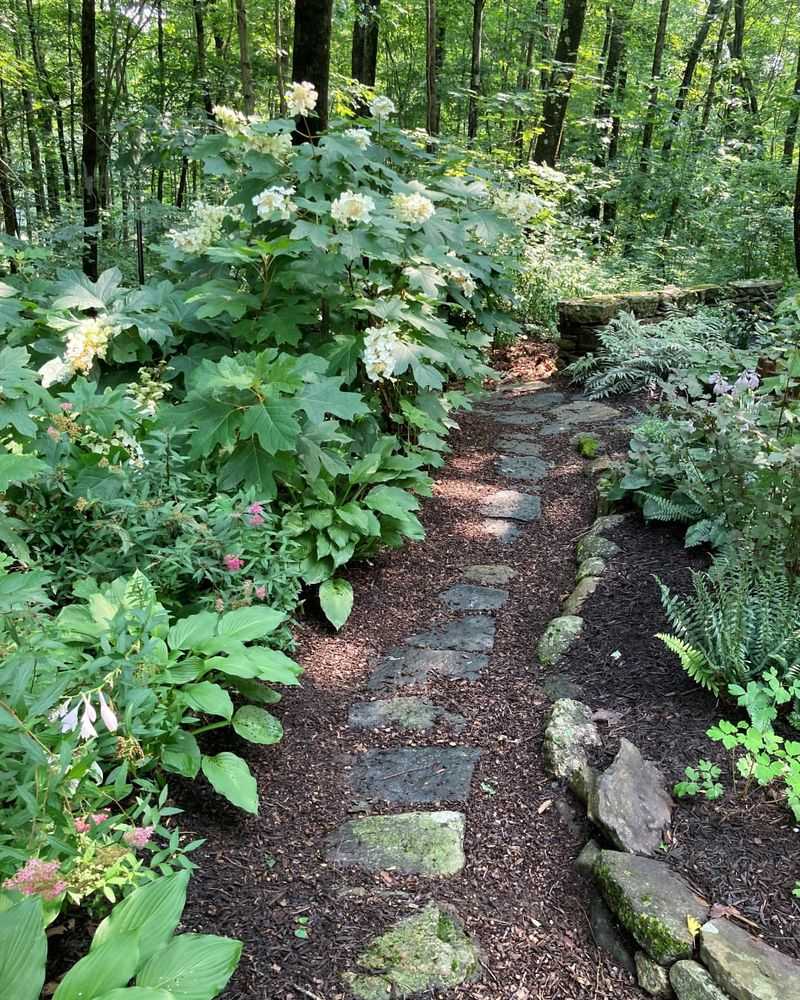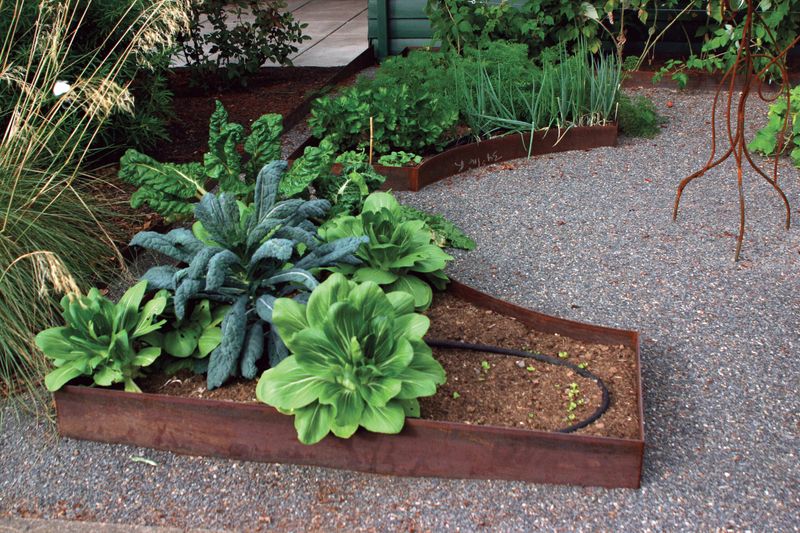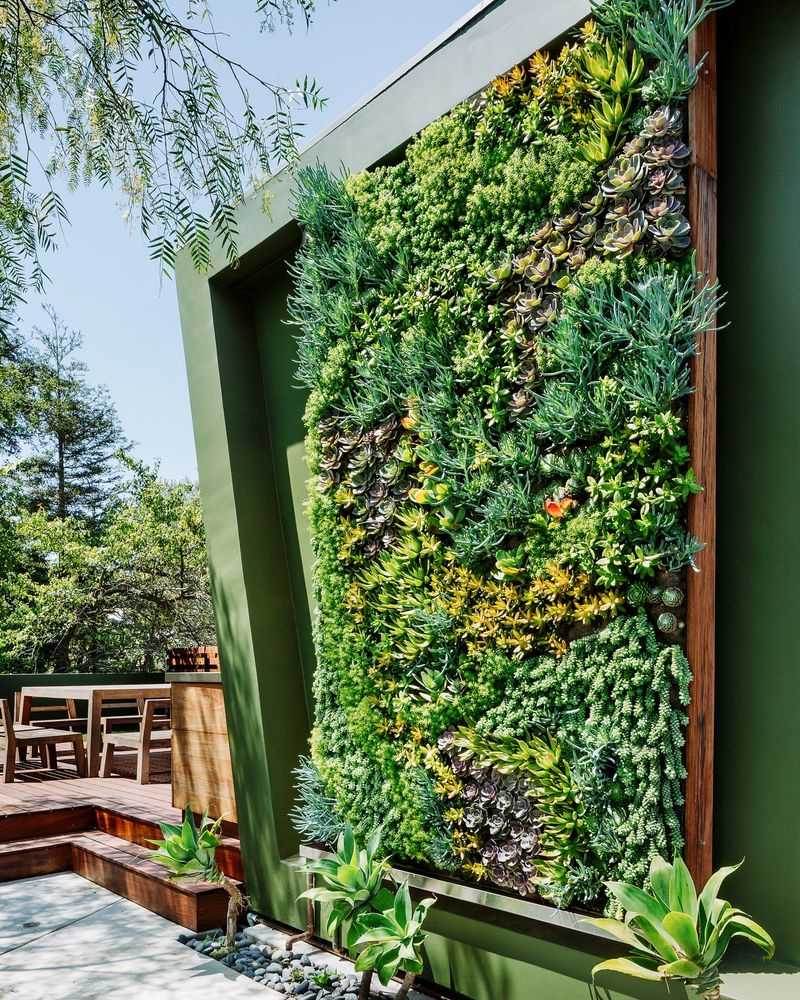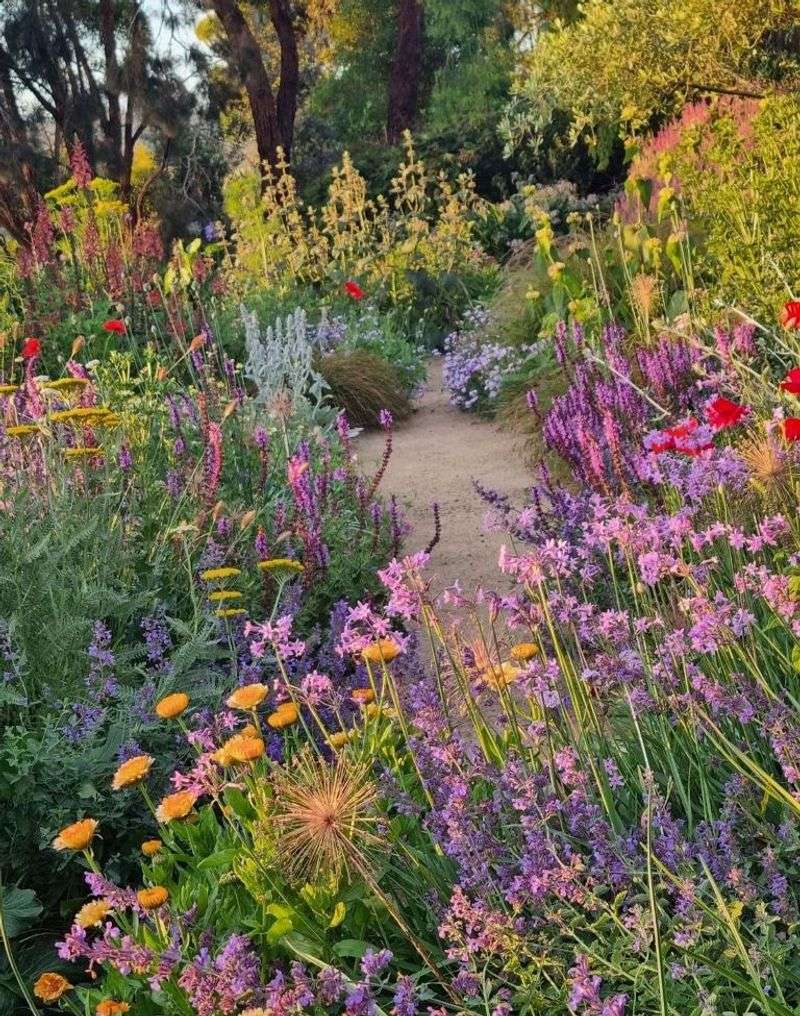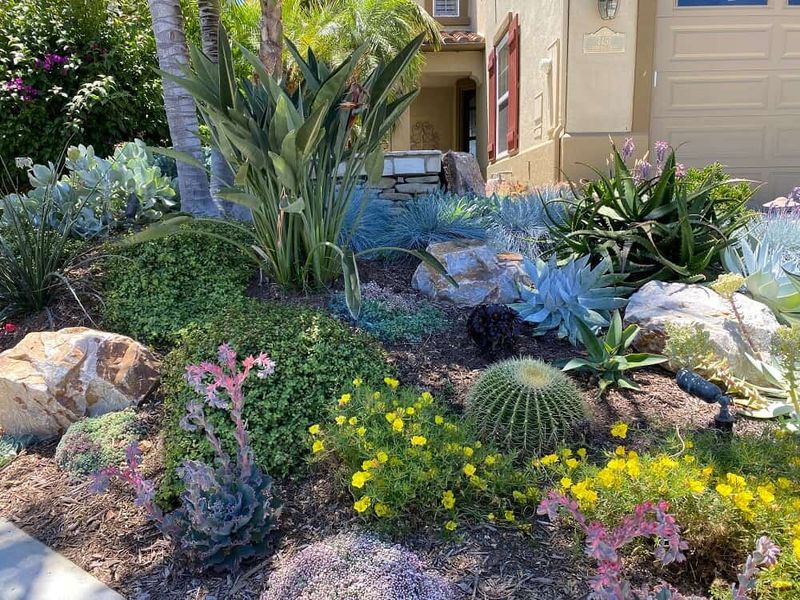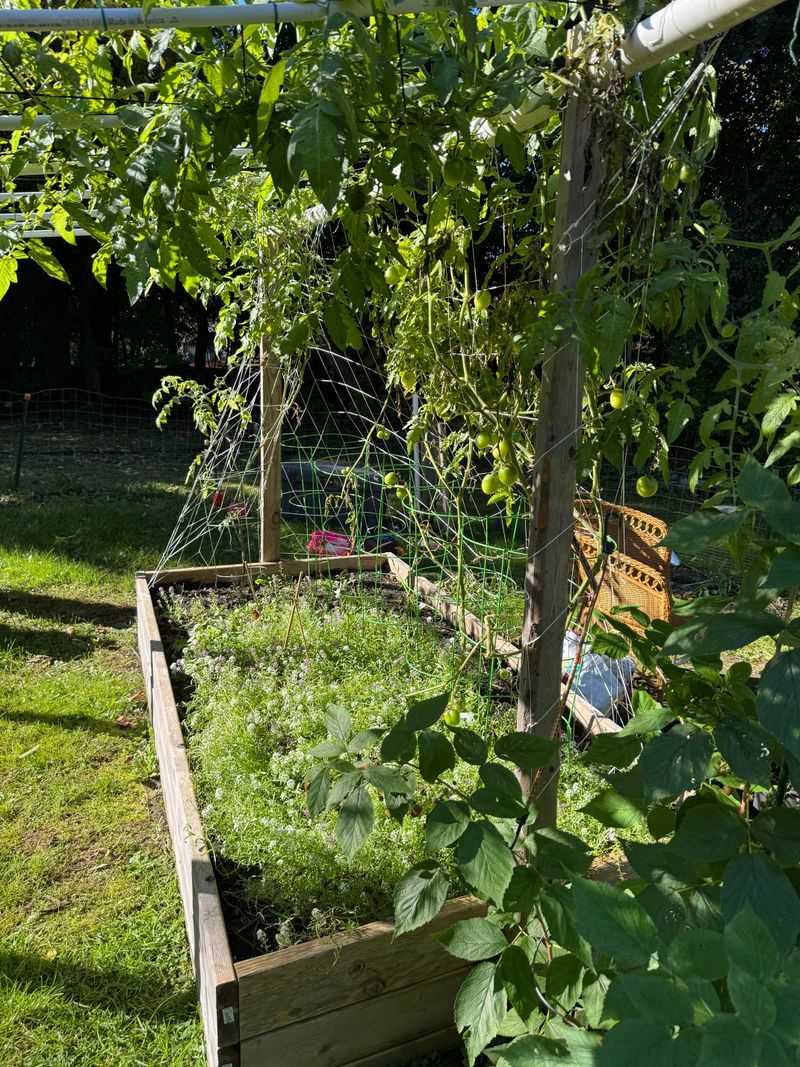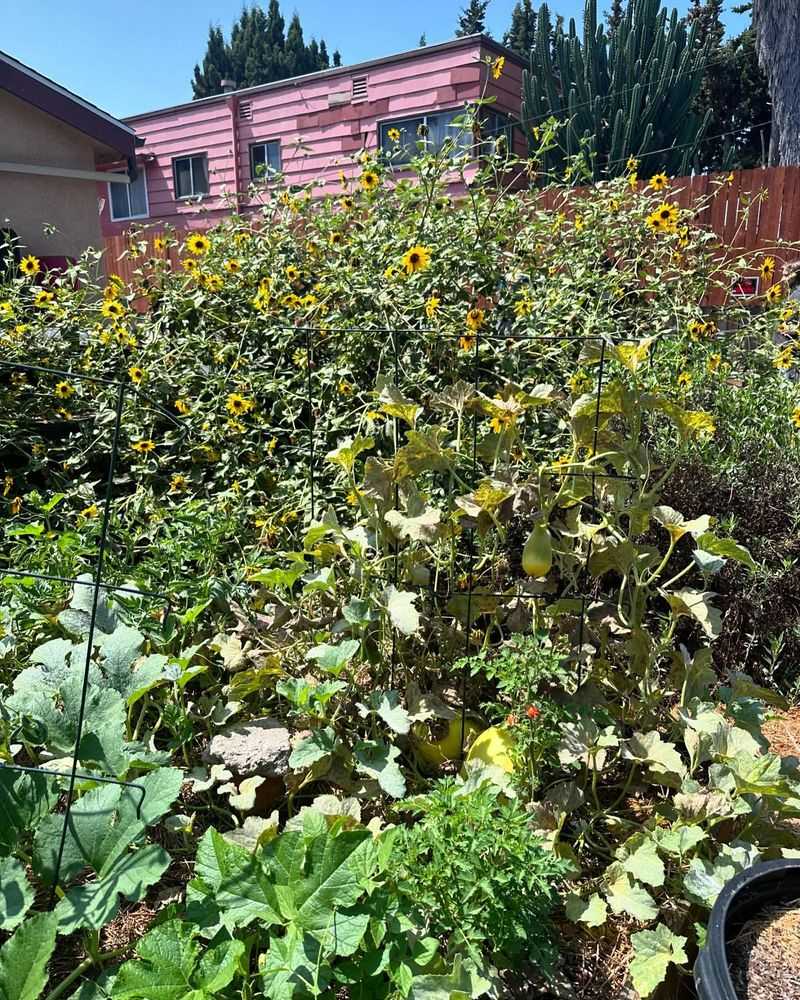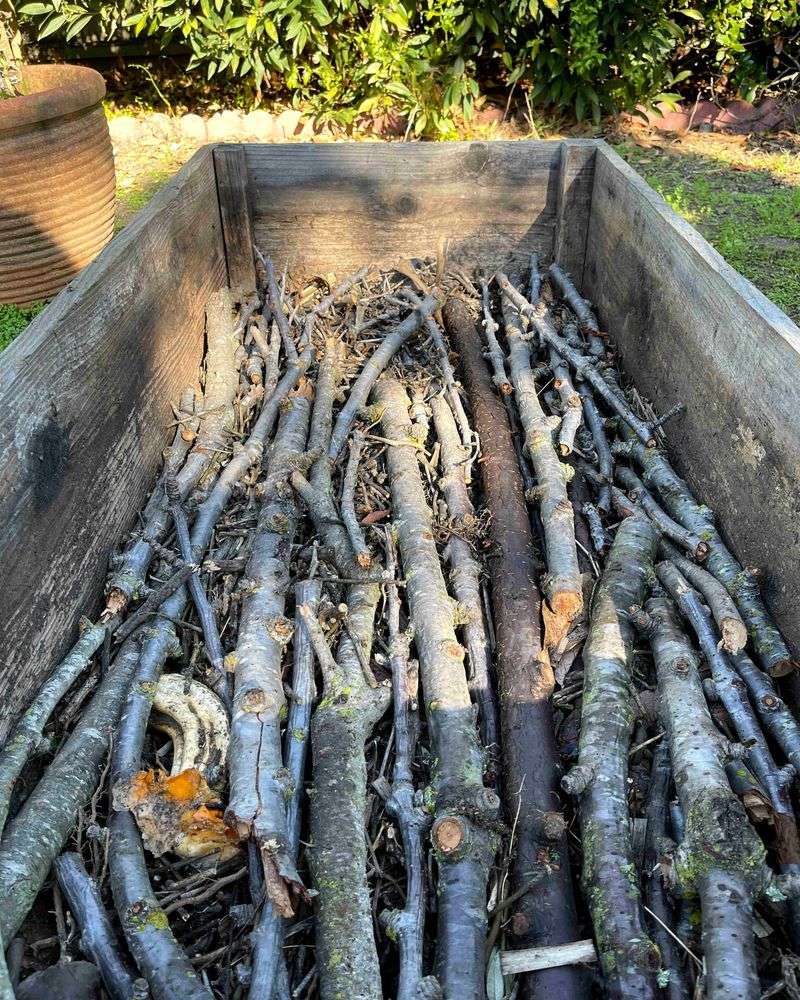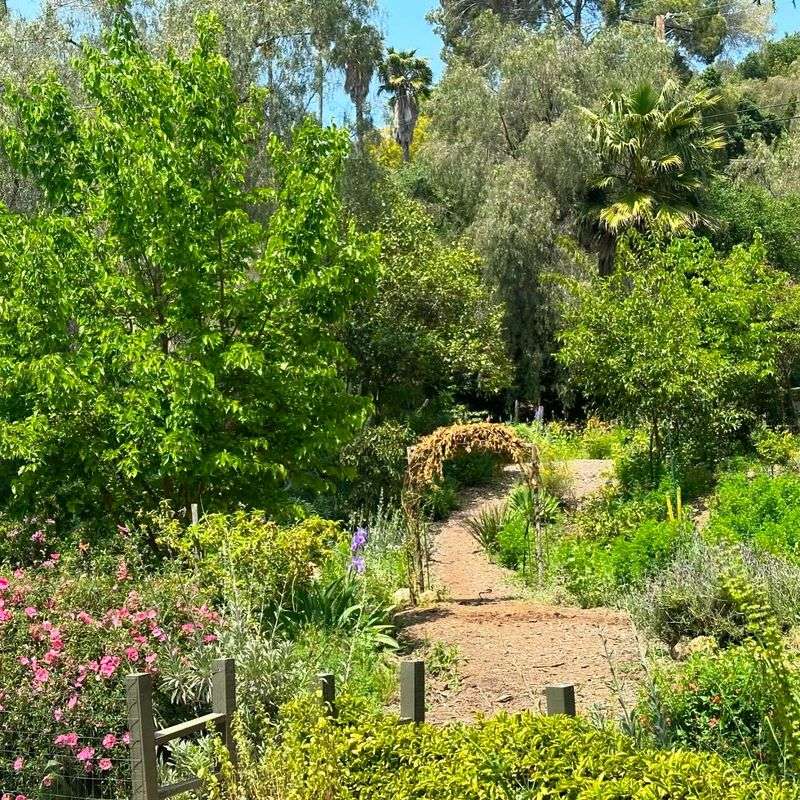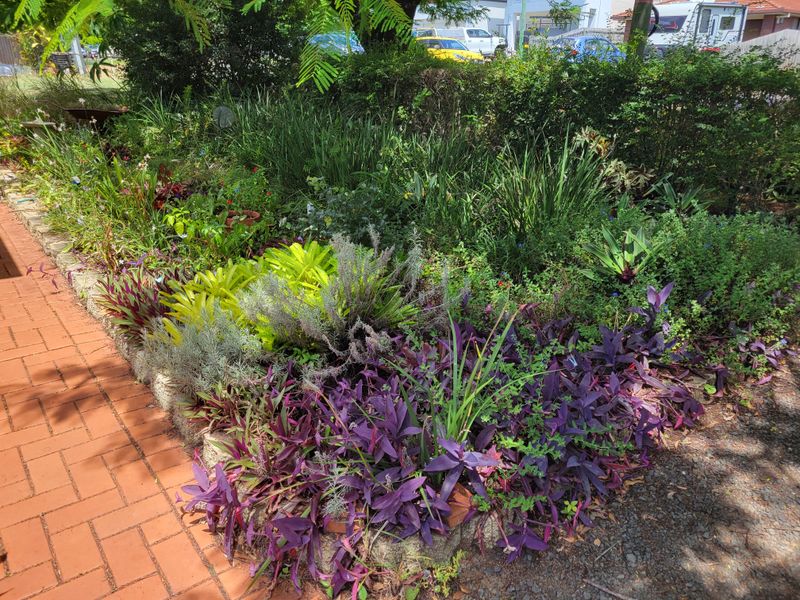Gardening in California doesn’t need to stick to rigid rules or tidy layouts. I’ve found that a little chaos brings out unexpected beauty, especially with our dry summers and mild winters. These 15 unconventional methods are perfect for embracing the wild side of gardening here.
My backyard came alive when I stopped trying to control everything and let nature lead. Plants began reseeding, odd pairings flourished, and the garden started to care for itself. Now, hummingbirds and helpful insects are regular visitors—proof I’m on the right track.
These freeform techniques save water, cut down on upkeep, and let your garden evolve naturally. They’re ideal for California’s varied microclimates, from foggy coasts to sunny valleys. Best of all, they invite creativity and welcome imperfection.
1. Scatter Native Wildflower Seeds
California poppies, lupines, and clarkias thrive when simply scattered across bare soil in fall. The winter rains do the watering work for you, and spring brings an ever-changing tapestry of colors.
No need for precise spacing or rows—nature doesn’t plant in straight lines! Just clear the area of major weeds first, rake lightly, and broadcast seeds. The randomness creates a natural meadow effect that reseeds itself year after year.
2. Create Unexpected Plant Pairings
Breaking conventional design rules opens up exciting possibilities. Try planting spiky agaves next to soft lamb’s ears, or mix edibles like strawberries with ornamental sedums.
Some of my most successful garden moments came from plants that chose their own companions. Purple sage volunteering next to orange California poppies created a stunning contrast I’d never have planned. Let plants tell you where they want to grow.
3. Embrace Volunteer Plants
Those surprise seedlings popping up in your garden? Before pulling them, consider letting them grow. Self-sown tomatoes often produce earlier than those you plant, and volunteer sunflowers pick spots where they’ll thrive best.
I’ve discovered amazing cosmos colonies that return yearly because I let the first volunteers stay. California’s mild climate means many annuals act like perennials. Just remove obvious invasives and enjoy the free plants nature provides.
4. Build Habitat Piles
Turn garden debris into wildlife havens instead of hauling it away. Stack fallen branches, stones, and hollow stems in quiet corners to create microhabitats for beneficial insects and small creatures.
My backyard lizard population exploded after adding a simple rock pile in a sunny spot. These habitat features provide shelter during California’s hot summers and places for overwintering during cooler months. Plus, they add natural, evolving sculpture to your landscape.
5. Let Paths Wander
Forget straight garden paths! Allow walkways to curve naturally around existing plants or features. Use mulch, stepping stones, or low groundcovers to create informal routes that invite exploration.
The meandering path through my herb garden started when I placed stones around volunteer seedlings I couldn’t bear to remove. Now it’s a sensory journey that slows visitors down. California’s year-round outdoor living makes these winding paths practical garden features.
6. Plant Edibles Everywhere
Who says vegetables belong only in designated beds? Tuck edibles throughout your landscape—rainbow chard makes stunning borders, while climbing beans transform fences into food sources.
California’s long growing season means you can harvest something year-round. My front yard features artichokes as dramatic focal points and strawberries as groundcover. Neighbors stop to admire the beauty, never realizing they’re looking at my grocery store.
7. Grow Vertical Jungles
California’s sunny climate creates perfect conditions for vertical growing experiments. Attach air plants to tree trunks, train vines up old ladders, or hang succulents from branch tips.
My garage wall transformed when I mounted recycled gutters filled with trailing succulents and herbs. The vertical dimension adds mystery and makes small spaces feel larger. Look for unexpected vertical opportunities—fences, posts, even old furniture can become growing surfaces.
8. Mix Drought-Tolerant Textures
California’s water challenges make drought-tolerant plants essential, but they needn’t be boring! Combine contrasting textures like fuzzy sage, spiky yucca, and delicate grasses for gardens that intrigue even without flowers.
Running my hands through different textures has become my favorite garden meditation. The silvery blues of many drought-tolerant plants create a soothing palette that looks intentional even when plants are randomly arranged. Morning dew highlights these textural differences beautifully.
9. Create Pocket Microclimates
California gardens often contain multiple microclimates in one yard. Embrace this by creating deliberate shade pockets near sun lovers, or moisture traps beside drought-tolerant plants.
A large rock in my garden stores heat during the day and releases it at night, allowing me to grow borderline-hardy plants nearby. Logs, boulders, and walls can shelter sensitive plants from harsh afternoon sun. These microclimate manipulations expand what you can grow without fighting nature.
10. Practice Chop-And-Drop Mulching
Forget bagging garden trimmings! Simply chop them into smaller pieces and drop them right where they fall. This instant mulch feeds the soil, retains moisture, and reduces maintenance.
My citrus trees thrive with their own fallen leaves as mulch. California’s decomposition rates vary by region, but most areas process this organic matter quickly. The natural mulch patterns create beautiful, evolving ground textures while supporting beneficial soil life.
11. Allow Strategic Weeds
Not all weeds deserve eviction! Some, like purslane or miner’s lettuce, are edible delicacies. Others, like clover, fix nitrogen and feed bees. Learn which “weeds” provide benefits and selectively allow them to stay.
The dandelions in my lawn edges attract early pollinators and their deep taproots bring up nutrients from subsoil. California’s year-round growing season means these beneficial weeds can provide continuous ecological services. Just manage them before they become truly invasive.
12. Build Hugelkultur Mounds
Hugelkultur—burying wood under soil mounds—creates self-fertilizing, water-retaining raised beds perfect for California’s dry conditions. The decomposing wood acts like a sponge, slowly releasing moisture during drought periods.
My first experimental mound used fallen eucalyptus branches covered with compost and soil. Now it needs almost no irrigation even in summer! The varying heights also create natural planting zones—moisture-lovers near the bottom, drought-tolerant plants up top.
13. Plant Guild Clusters
Instead of single specimens, plant supportive communities or “guilds” that benefit each other. A classic California example pairs nitrogen-fixing lupines with nutrient-hungry fruit trees and pollinator-attracting herbs.
My apple tree thrives with comfrey mining nutrients below, strawberries covering ground, and daffodils deterring gophers. These plant relationships mimic natural systems. Once established, these guilds practically maintain themselves while producing multiple harvests from the same space.
14. Encourage Beneficial Neglect
Sometimes the best gardening happens when you step back and observe rather than intervene. Selective neglect—intentionally under-tending certain areas—often reveals surprising garden strengths.
The corner I “forgot” for a season became my garden’s most wildlife-rich spot. California’s resilient native plants often reassert themselves when given space. This approach saves water and labor while creating authentic habitat. Just monitor occasionally to prevent truly problematic issues.
15. Utilize Nurse Plants
Tender young plants often struggle in California’s harsh sun. Plant them near established “nurse plants” that provide dappled shade and wind protection until newcomers establish themselves.
Fast-growing artemisia sheltered my young manzanita shrubs through their first summer. The artemisia’s silver foliage reflected heat while its roots stabilized soil. Once the manzanitas established, I selectively trimmed back the nurse plants. This mimics natural plant succession patterns seen in California’s wild landscapes.

